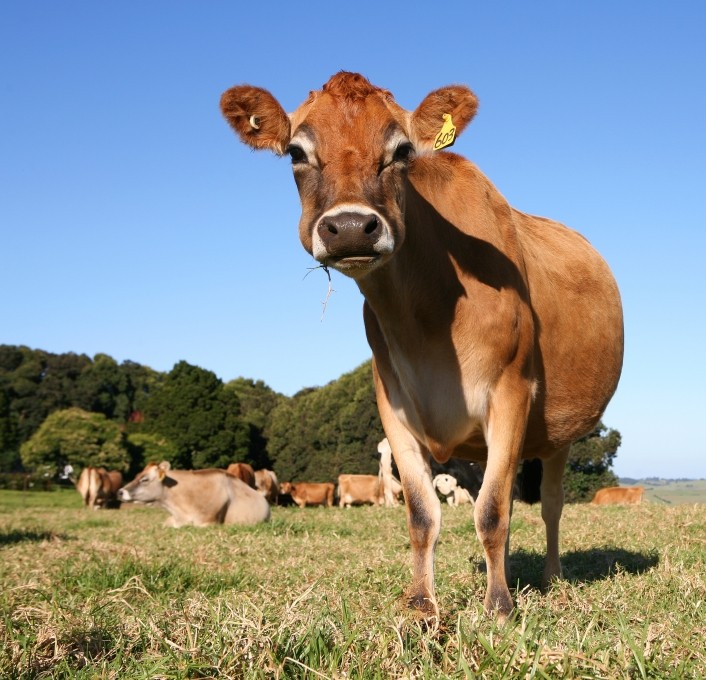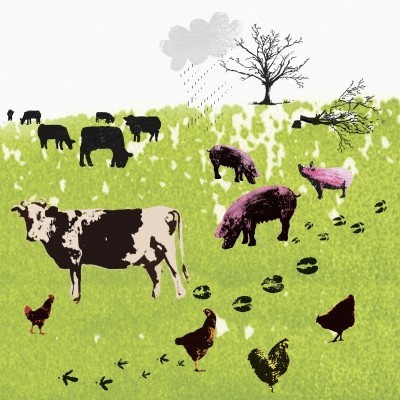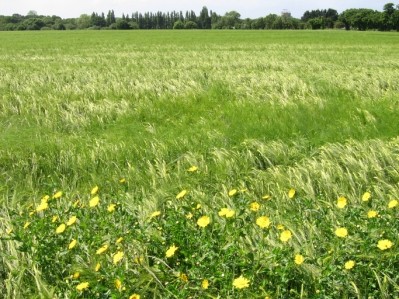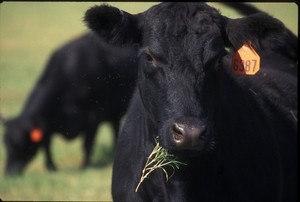Canola oil may boost feed intake, limit methane emissions in cattle

A team of international researchers reported results from experiments adding canola oil to forage diets in the journal Livestock Science.
“This grazing study demonstrated that canola oil sprayed on grazed herbage had effective mitigation effect on CH4 [methane] emission from cattle,” said scientists. “Oil supplementation promoted an increase in feed intake, hence further reducing CH4 yield (emissions per unit of feed intake).”
Additionally, added lipid content may be an option for improving forages and limiting greenhouse gas emissions from pasture-raised cattle, they said.
Why canola oil
The methane emission from ruminants is responsible for a large amount of anthropogenic emission of methane, said researchers. But, additional lipid presence in a diet may be a mitigating factor.
“Temperate pastures are often high in nitrogen and fiber and low in dry matter (DM), fatty acids and NSC [non-structural carbohydrates] contents,” they said. “Lipid contents range from 3–4% of DM, of which 40–50% are polyunsaturated fatty acids (found in young leaves), with the remaining lipids (waxes, phospholipids, pigments, etc) being mostly indigestible.”
However, dietary unsaturated fatty acids appear to alter the availability of H2 and biohydragenation of fatty acids in the rumen could help reduce methane production, they said.
“Dietary manipulation in grazing situations may not be a practical or cost/effective mitigation strategy, but herbage fatty acid contents are amenable to improvement by pasture management and genetic approaches,” said the scientists. “This study evaluated the short-term changes in feed intake, ruminal volatile fatty acids (VFA) concentration profiles and CH4 emissions from grazing cattle in response to an increase in dietary lipid intake.”
Experiment details
In the experiment, 60 steer were assigned to one of two grazing treatments, said researchers. The diets included a control ryegrass pasture and pasture with a spray treatment of canola oil, 12L per 0.1ha.
“The amount of oil to be sprayed was estimated not to exceed the optimum concentration of total lipids in the diet (8%, DM basis),” they said. It was applied on a daily basis.
In the initial acclimation cattle were fed on ryegrass for 25 days then weighed, split into groups and fed on 0.1ha strips of pasture while wearing breath collection equipment, they said. The second period lasted 12 days and included both control and treated diets.
Methane emissions were recorded using a tracer technique and collection devices for three days in the first phase to set baseline emission amounts, they said. Methane production was measured over four days in the second phase.
“On Day 26 of the acclimatization period, the cattle were orally dosed with brass permeation tubes containing the SF6 [sulfur hexafluoride] tracer,” they said.
Two animals in each group also acted as background sample collectors, they said. The cattle were not given the tracer and instead wore two neck collection canisters.
Concentrations of both methane and sulfur hexafluoride were evaluated, in addition to sulfur hexafluoride permeation rates, to determine daily methane release, they said.
Dry matter intake (DMI) was calculated for the second period, said scientists. And samples of VFA from rumen fluid were collected.
Fecal samples also were collected during the last five days of the trial, they said.
Results
Baseline gas emissions were the same for cattle in both treatment groups, said researchers. But methane emissions from cattle on the treated diet were reduced when compared to gas released by control group cattle.
“When the treatments were applied, the animals grazing the oil-sprayed pasture had 11% lower daily CH4 emissions (g/d) than those grazing the Control herbage,” they said. “Further, because the estimated DMI of cattle grazing the oil-sprayed pasture was 10% higher than that of cattle on Control pasture, their mean CH4 yield (g/kg DMI) was 18% lower than those on the Control pasture.”
The cattle getting the experimental diet received a higher fat content with their forage intake – 8.9% compared to 3.9% of dry matter, they said. Cattle getting the experimental diet also had a higher DMI intake than those on control, and the treated forage resulted in a lower acetate to propionate ratio in rumen fluid.
“It is concluded that enhanced dietary lipids contents is an effective means of reducing CH4 emissions from grazed pasture,” they said. “Longer term evaluation of oil supplementation effects on CH4 emission and feeding value of grazed herbages may aid in defining forage breeding avenues targeting lipid content of forage species.”
Source: Livestock Science
Title: Feed intake and methane emissions from cattle grazing pasture sprayed with canola oil
DOI: published online before print: 10.1016/j.livsci.2015.11.020
Authors: C.S. Pinares-Patiño, F.E. Franco, G. Molano, H. Kjestrup, E. Sandoval, S. MacLean, M. Battistotti, J. Koolaard, J. Laubach











